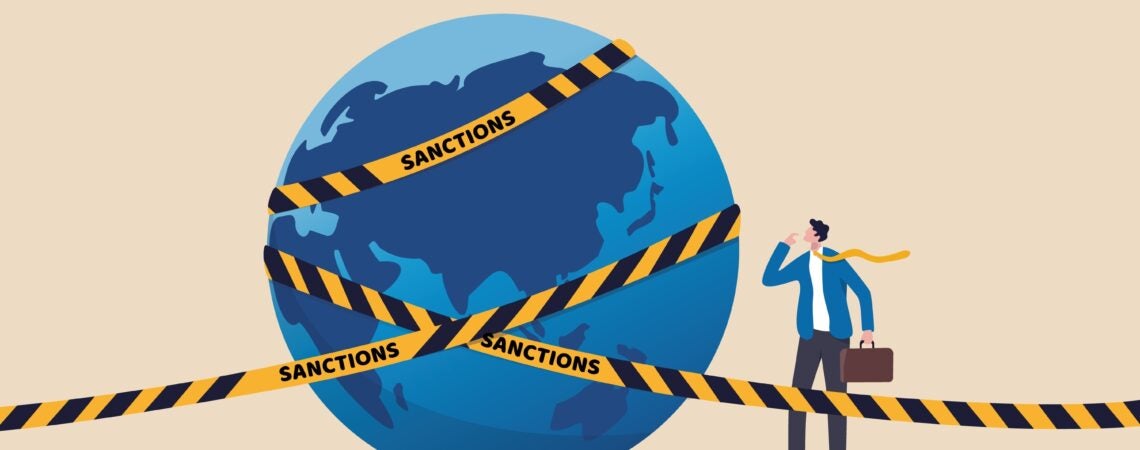The Biden administration’s recent Executive Order to restrict outbound investment from the United States to China in certain high tech sectors is a newly-minted arrow in the quiver of U.S. policies attempting to grapple with the challenges China poses.
However, investment restrictions along with other primary tools of economic statecraft like sanctions and export controls are “single use.” Once exercised, they either break or preclude economic ties. The tools admittedly have limitations and leakage. Nonetheless, given the sheer size of the U.S. market, role of the U.S. dollar in the global financial system, and magnitude of U.S. foreign direct investments, the measures are powerful and represent consequential U.S. national security and foreign policy positions.
These economic tools also provide significant points of leverage for the United States due to global economic interconnectedness created through U.S. leadership. But, used enough without alternatives to refill leverage reserves, the strategies risk sidelining the U.S., leaving few policy levers short of military conflict in the long term. The existential question is how the U.S. can continue to maintain and enhance its leverage when its offensive economic tools inherently diminish every time they are used? To continue to exercise these impactful tools, America needs to continually renew connection points and think strategically about how it’s exercising its leverage, including by re-engaging on trade, being more selective, and getting its own economic house in order.
The globalized world that sprung from the post-World War II rules-based order has created dependencies by fostering growth, prosperity, and peace through interconnectedness. Reduced barriers to trade and investment have encouraged global sourcing and value chains fueled by U.S. R&D, technology, and investment. The resulting global system has deep ties to U.S. technologies and wherewithal, with over 70% of global trade executed in U.S. dollars. Trade and financial ties exist with friend and foe—including China and Russia. Yet, as U.S. policy has increasingly utilized these ties to achieve foreign policy, national security, and economic objectives, dependencies have become liabilities.
Tectonic geopolitical shifts have precipitated the increased use of sanctions, export controls, and investment restrictions in lieu of military force, throttling touchpoints with the United States. The pure presence of U.S. technologies, parts, people, or funds in transactions can trigger a complex set of prohibitions that often apply extraterritorially—requiring that parties choose between doing business with the U.S. or targeted parties or countries. U.S. technologies remain pre-eminent in many sectors and are complicated to “design out.”
Once a country, entity or person is sanctioned, or the conveyance of technologies or capital is restricted, the tie that made the action impactful is immediately broken. The action cannot be “redone” for increased effect. And, these tools are being used at breakneck pace: In 2000, the U.S. sanctioned 912 people and entities. In 2022, the number had grown to nearly 12,000. Countries like China fill the vacuum, replacing U.S. technologies or investment with Chinese ones—and the U.S. cannot stop or affect that activity going forward.
The U.S. is thus quickly depleting its leverage without a plan to replenish. Given America’s rapidly declining percentage of global GDP—approximately 40% in 1960 to 15% in 2023, it needs to rethink its engagement with the world if these fracturing instruments remain primary policy tools. Witness the reticence of the Global South in supporting sanctions on Russia despite its brutal invasion of Ukraine.
The stakes are high and the U.S. needs a hard reset to secure its leverage in the short, medium and long term. It should:
Use more effectively the size of the U.S. market to create positive connections. Returning to the trade negotiating table is not only an economic imperative; it’s a national security one. Leverage is built by cementing foreign policy partnerships through permanent trade deals (as opposed to talk shops like the Indo-Pacific Economic Framework for Prosperity). Creating Cold-War style blocks will reduce U.S. leverage in the long-term. In addition to building bridges with allies, America must enhance ties with “fence-sitter” countries (e.g., India) to regain lost leverage with close partners and even China.
Be selective in how it uses leverage going forward. There are times to throw down the gauntlet. Russia today is a good example. In the case of China where the game is long, the U.S. should be mindful of how it uses economic tools. The calculations for when to use these policies should look beyond what satisfies short-term political expediencies to how retaining interconnectedness and dependency can provide important points of leverage.
Get its political and economic house in order and use market-based tools to drive technological innovation and investment in the U.S. Current industrial policy with its use of subsidies and tariffs detracts from U.S. leverage. It creates negative precedents, causing even allies to erect reciprocal trade barriers. Case in point is responses by allies to the Trump tariffs and green subsidy provisions in the Inflation Reduction Act. American politicians should uphold our free market values. That is also part of our leverage.
Neena Shenai is a Nonresident Fellow at the American Enterprise Institute. This piece draws on a forthcoming paper written for the “Economic Security and the Future of the Global Order in the Indo-Pacific” 2023 conference at the University of Pennsylvania’s Perry World House.
To read the full article as it is published on RealClearPolicy’s website, click here.

